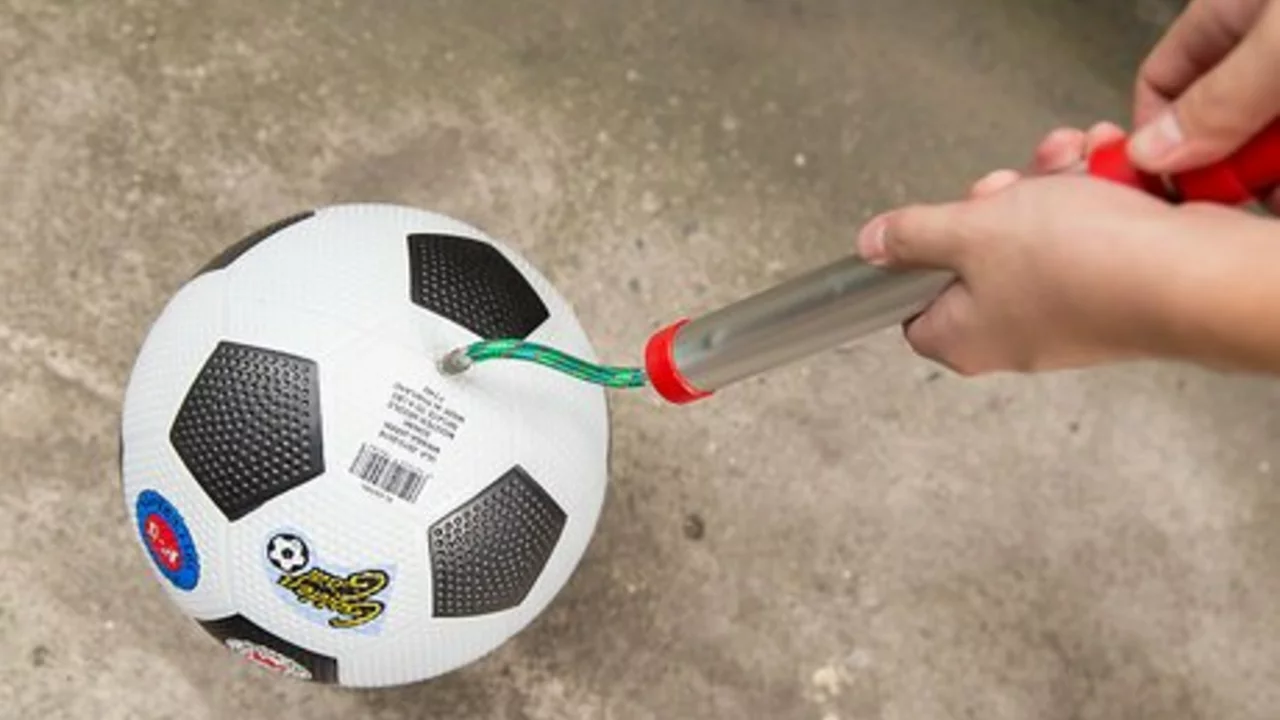Understanding the Basics of Soccer Ball Air Pressure
First and foremost, let's get started by understanding the basics of soccer ball air pressure. The air pressure in a soccer ball can influence the way it performs during a game. If a ball is underinflated, it may not bounce or fly as expected, making it harder to control. On the other hand, an overinflated ball can be difficult to handle and may even cause injuries. It is crucial to get the balance just right to ensure optimal performance and safety during the game. Soccer balls come with a recommended air pressure range, usually inscribed near the valve. This range is typically between 8.5 to 15.6 psi (pounds per square inch), depending on the type and size of the ball.
The Importance of Proper Soccer Ball Inflation
In this section, we will be discussing why it's vital to inflate your soccer ball correctly. The right pressure ensures that the ball moves predictably on the field, making the game fair and enjoyable. It also extends the lifespan of the ball, preventing premature wear and tear. An underinflated ball is more prone to damage, while an overinflated one can burst under the pressure. Moreover, using a properly inflated ball can prevent injuries. Using the wrong ball pressure can lead to accidents like sprains, fractures, or concussions. Therefore, it's not just about the game; it's also about the safety of the players.
How to Check Your Soccer Ball’s Air Pressure
The next thing we need to know is how to check the air pressure of a soccer ball. You can do this using a ball pump with a built-in pressure gauge. Simply insert the needle into the ball's valve and pump. The gauge will show the ball's current air pressure. Remember to deflate the ball a bit if the pressure is too high, and inflate it if it's too low. Always check the pressure when the ball is at room temperature because heat can increase pressure. Also, don't forget to moisten the needle with some oil or soapy water before inserting to avoid damaging the valve.
Steps to Properly Inflate a Soccer Ball
Now that you know how to check the pressure, let's go through the steps to properly inflate a soccer ball. First, you'll need a ball pump with a pressure gauge. Insert the needle into the ball's valve and start pumping. Keep an eye on the gauge and stop once it reaches the recommended pressure. If you overinflate the ball, release some air until you reach the correct pressure. Remember to moisten the needle before insertion and check the ball's pressure at room temperature.
Common Mistakes in Soccer Ball Inflation
There are some common mistakes that people make when inflating a soccer ball. One of the most common is overinflation. This not only affects the ball's performance but can also lead to it bursting. Another common mistake is underinflation. An underinflated ball can be equally problematic, as it can lead to unpredictable movements and increased risk of damage. Not checking the pressure regularly is another mistake. The pressure should ideally be checked before every game to ensure optimal performance.
Maintaining Your Soccer Ball’s Air Pressure
Maintaining the correct air pressure in your soccer ball is essential for its performance and longevity. Check the pressure regularly and adjust it as needed. Deflate the ball slightly if you won't be using it for a while to relieve some pressure off the seams. But don’t leave it completely deflated as it may lose its shape. Remember to always use a pump with a pressure gauge to ensure you're inflating the ball to the correct pressure. And when the ball is not in use, store it in a cool, dry place away from direct sunlight as heat can affect the pressure.
Final Thoughts on Soccer Ball Air Pressure
In conclusion, having the right air pressure in a soccer ball is crucial for the performance of the ball and the safety of the players. It's something that should be checked regularly to ensure the best possible game experience. With the right tools and knowledge, maintaining the correct soccer ball air pressure should be a breeze. Always remember to refer to the manufacturer's recommended pressure range for the best results.

Write a comment